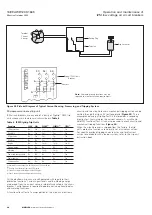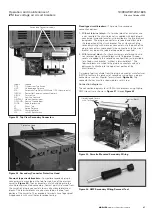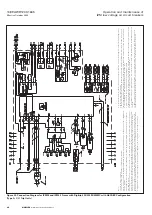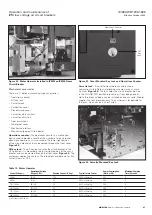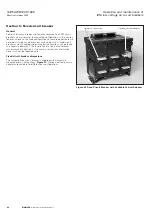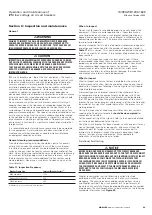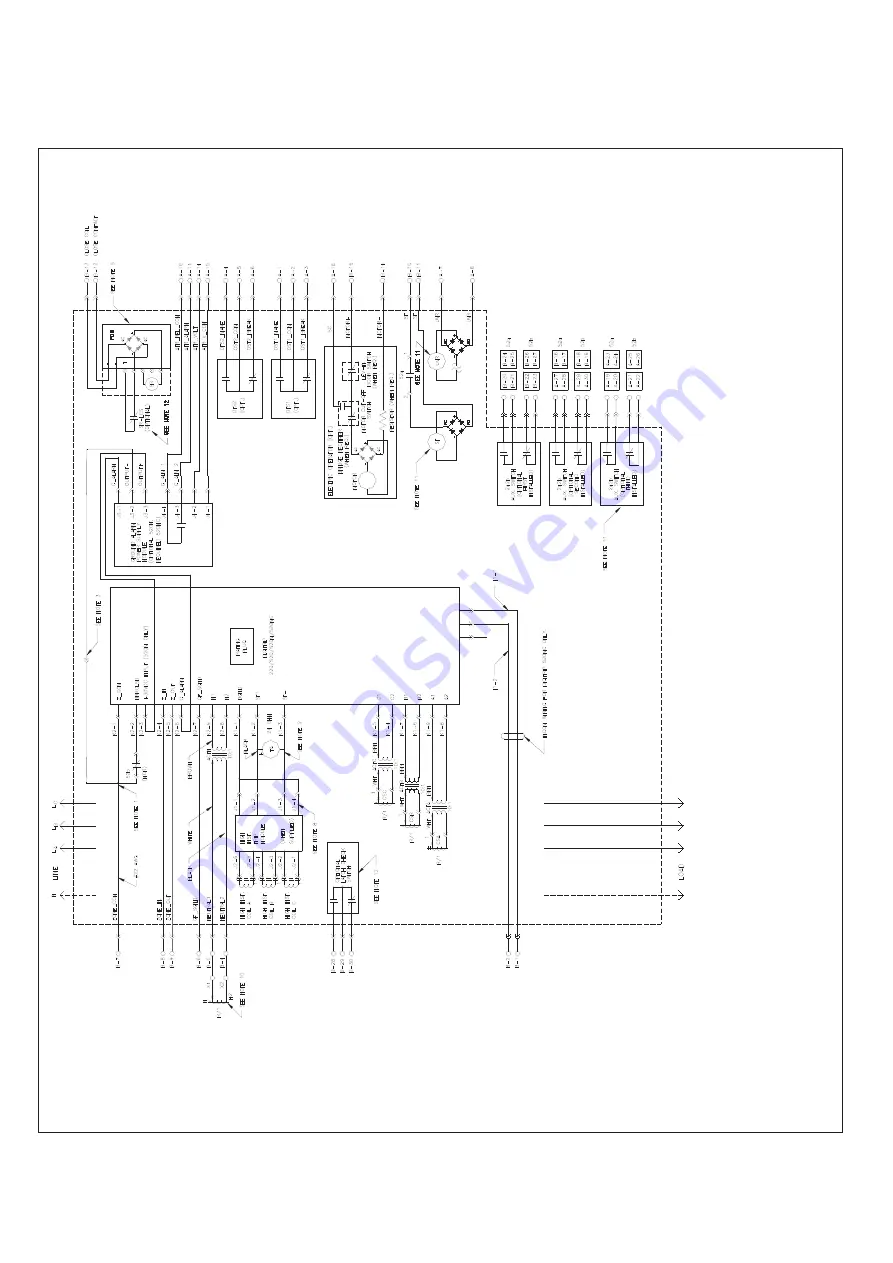
28
Operation and maintenance of
IZM low voltage air circuit breakers
MOELLER
www.moeller.net/de/support
10/09 AWB1230-1605
Effective October 2009
Figure 37. Connection Diagram for IZM93 and IZM20, and IZM97 and IZM32 Frame with Digitrip 220/520/520M/520MC
(Type A, V, U Trip Units)
SR–
SR+
Notes: 1.
Four
-wire
crimp
connection.
2.
Three-wire
crimp
if
high-instantaneous
trip
module
is
supplied.
3.
Wire
connection
used
with
Digitrip
520M/520MC
ground
alarm
power
supply
module
will
“hang
unconnected”
if
Digitrip
220
or
520
is
supplied.
4.
All
auxiliary
switches
shown
with
breaker
in
OPEN
position
and
with
spring
not
charged,
and
with
trip
unit
in
“non-tripped”
state
(OTS
switches).
5.
The
spring
release
accessory
consists
of
an
“SR”
coil
and
a
P.C.
board.
The
printed
circuit
board
provides
a
0.20-second
pulse
for
the
closing
operation.
Voltage
must
be
removed
and
then
reapplied
for
subsequent
operation.
An
optional
latch
check
switch
(LCS)
accessory
may
be
connected
to
the
spring
release.
The
(closed)
LCS
delays
the
spring
release
pulse
until
the
breaker
mechanism
is
ready
to
close
(charged
and
reset).
(This
will
ensure
that
the
latch
will
always
be
in
the
proper
state
before
the
spring
release
pulse
is
initiated.)
If
voltage
is
maintained
to
the
spring
release,
the
closing
pulse
will
occur
when
the
mechanism
is
charged
and
reset
(LCS
open).
Voltage
must
be
removed
and
reapplied
to
the
spring
release
for
subsequent
operation.
6.
To
provide
selected
time
delays
for
short
time
and/or
ground
time
functions
for
testing
or
non-zone
interlocking
applications,
a
jumper
from
B-8
to
B-9
is
required.
7.
On
three-pole
breakers
only
, having
ground
fault
functionality
, a
jumper
installed
from
B-6
to
B-7
will
enable
source
ground
fault
sensing
and
disable
residual
ground
fault
sensing.
Inputs
B-4
and
B-5
will
be
reassigned
for
source
ground
sensor
inputs.
8.
This
lead
supplied
on
G62
style
high-instantaneous
trip
module
only
.
9.
Motor
operator
switch
shown
with
breaker
closing
spring
discharged.
10.
On
four
-pole
breakers,
the
neutral
current
sensor
is
the
same
style
and
wired
the
same
as
the
phase
sensors,
and
is
located
within
the
breaker
frame.
The
secondary
contacts
B-4,
B-5,
are
not
wired
out.
11.
Second
shunt
trip
may
be
installed
(using
A-7,
A-8
contacts)
in
place
of
UVR
. Third
auxiliary
switch
not
available
with
second
shunt
trip.
12.
Only
one
latch
check
switch
may
be
installed.
Use
of
customer
-accessible
latch
check
switch
(B
-29,
B
-30)
in
series
with
spring
release
defeats
anti-pump
function
and
is
not
recommended.
See
Note
5
for
spring
release
latch
check
switch.
13.
This
auxiliary
switch
assembly
is
not
available
in
narrow
frame.
Maximum
of
two
auxiliary
switches
(4
A
/4
B
) installed
in
narrow
frame.











